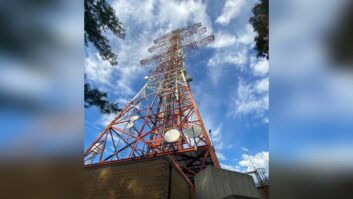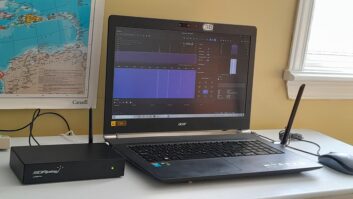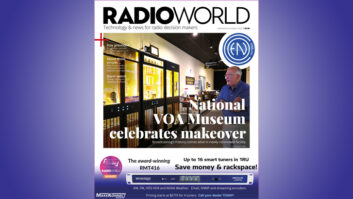Debate about the future of shortwave broadcasting focuses on the correct observation that shortwave listening is no longer a mainstream activity in most of the world.
The future of shortwave broadcasting — “Shortwave 2.0” — will not involve any revival of those large audiences. Instead, it will be an activity of communications enthusiasts and professionals. They would comprise a reserve corps able to relay information to larger populations in their countries when newer media are blocked or otherwise become unavailable.
The beginning of the end of “Shortwave 1.0” was described in “Shortwave Broadcasting Begins Its Long Slow Fade,” an article I wrote in the 1995 World Radio TV Handbook. I noted the elimination, in the post-Cold-War media environment, of shortwave broadcasts in some languages, as well as some entire transmitting sites, e.g. Trans World Radio on Bonaire and Far East Broadcasting Company in California (KGEI). In my (then) role as audience research analyst at the Voice of America, I listed examples of declining shortwave audiences.
The really big chunk fell from the shortwave glacier six years later, when BBC World Service ended its English broadcasts to North America. In the following years, other international broadcasters followed, first dropping shortwave to North America, and eventually to other parts of the world. The aforementioned 1995 World Radio TV Handbook listed 27 European countries with English broadcasts on shortwave to North America. Now only Radio Romania International has shortwave English to North America.

The exodus from shortwave (for both international and domestic broadcasting) was due to competing media, including relays on FM stations in the target country, satellite broadcasting (mostly television) and, especially, the internet.
For the audience, internet content is easier and more reliable to receive. It also allows content to be received on demand, and text or video in addition to the audio to which shortwave was restricted. As an audience researcher, I could see in the datasets that audiences for international media were migrating from radio to internet-based media.
For the broadcaster, in addition to keeping up with audience preferences, the internet is a cheaper way to transmit information to the world.
Internet, increasingly blocked
Because of the internet’s ability to move uncensored news and opinion within nations and across boundaries, it was seen as a transformative tool for democracy. But, soon enough, regimes developed methods to block information they did not want coming into their countries. Prominent among these are China’s “Great Firewall” and Iran’s “Halal Internet.”
Circumvention tools and VPNs have emerged to allow access to websites and platforms that have been blocked. The circumvention tools work only as long data is on the lines. Ultimately the lines can be switched off or cut. In this circumstance, no circumvention tool will work other than wireless ones.
Radio is the ultimate internet circumvention tool because it is not the internet. And it can’t be tracked.
This brings us to “Shortwave 2.0.”
Shortwave 2.0 won’t reach the audience of millions as in the heyday of shortwave decades ago. It will reach those who seek comprehensive, reliable, credible information. This audience will be technically inclined: radio amateurs, hobbyist shortwave listeners, scholars, technology enthusiasts and government and military personnel with access to receivers. They will pass on the information they have received to the larger audience.
Text via shortwave
An important feature of Shortwave 2.0 is that it is not limited to audio.
Starting about 2010 I was introduced to the digital modes of amateur radio. I was amazed that such a weak signal, in noisy conditions, could produce text. At that same time, VOA, RFE/RL and RFA were starting to feel the effects of internet blocking, especially in China and Iran. These two developments, combined, pointed to radio as a possible solution.
Starting in 2013, I was able to test the concept in “VOA Radiogram,” an experimental weekly program on the Voice of America. Instead of voice and music, we transmitted, on a conventional amplitude-modulated double sideband transmitter at Greenville, N.C., the warbles of the amateur radio digital modes. We tried most of the modes available to the amateur radio community. After several weeks, we concluded that MFSK32 (120 wpm) and MFSK64 (240 wpm), which can transmit images as well as text, provided the most satisfactory performance for conditions on the shortwave broadcast bands.
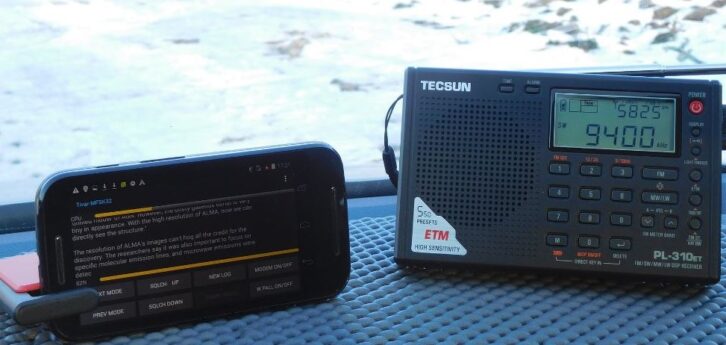
In 2017, when I retired from VOA, “Shortwave Radiogram” succeeded “VOA Radiogram.” Transmission of text moved to private shortwave stations WRMI in Florida and WINB in Pennsylvania.
Because “Shortwave Radiogram” is transmitted on a regular amplitude-modulated shortwave transmitter, it can be received on any shortwave radio, from inexpensive portable radios with no sideband capability, to more elaborate communications receivers, amateur transceivers (most of which nowadays have general coverage receivers), and software defined radios (SDRs).
For now, the audio must be piped to a PC equipped with decoder such as Fldigi from w1hkj.com. For Android devices, AndFlmsg and its receive-only version TIVAR are available. Decoding can be as simple as placing a mobile device next to a portable radio, for “acoustic coupling.”
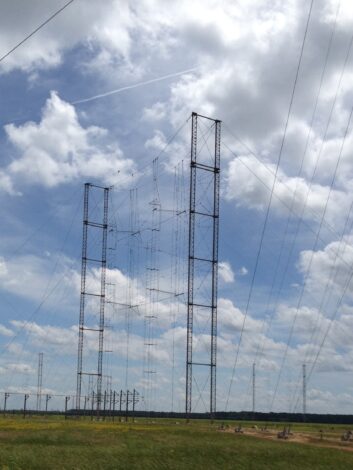
The big advantage of text via shortwave is that it can be received successfully in poor reception conditions, in which voice broadcasts are difficult to comprehend. Text can be read and re-read, and passed on to others through personal media. The content can start online in the broadcaster’s country, shifting to wireless or satellite to get past blockage at the border, then back online within the target country. Text can be received while away, or while sleeping, when reception conditions are optimum, then read at a convenient time.
This radiogram concept is not Digital Radio Mondiale. DRM requires special transmitters (or exciters) and hard-to-find receivers. I know from hundreds of hours of DRM reception since the early part of this century that DRM signals drop out too often in the face of a weak signal, fading or even modest amounts of interference — i.e., typical shortwave conditions.
A hybrid digital-analog system
As shortwave listeners know, analog carriers degrade but do not drop out until reception is very poor. The digital mode clings to the tenacious analog carrier, using its error-correction tricks to convey content successfully even in unfavorable conditions. It is therefore a hybrid communications method, employing the best of both analog and digital. (Text via radio was also resistant to jamming in a few experiments that I was able to conduct.)
In future wars, conflicts and crises, we can expect a hostile environment for international media. If online communication is interdicted, shortwave can come to the rescue. But, in recent decades, so many shortwave (and medium-wave) transmitting sites have been dismantled that signals will often have to be transmitted to the affected region from distant or less than ideal locations. The radiogram concept of text via radio is robust and can survive this situation.
Although text via radio can be received on any existing radio, international broadcasters need to pay more attention to the receiver market. Many consumer-grade portable radios with shortwave bands, especially those sold in developing countries, are of poor quality. International broadcasters should provide advice to audiences on how to select, and where to buy, radios with satisfactory performance. Further, broadcasters should become involved in the design of shortwave radios. An ideal radio of the near future should receive and decode text. (Some amateur radio transceivers already do this.)
In the meantime, international broadcasters should not close any more shortwave transmitting sites. They are essential facilities to relay information when the internet is blocked, which will happen in more places, more frequently and more thoroughly.
On those transmitters, text should be broadcast at least once a week. This will enable early adopters to become familiar with the concept. It will also get the attention of receiver manufacturers and software developers.
During wars and crises, the internet will be most tightly restricted at a time when uncensored news is most needed. Information gathered at great effort and expense may not be able to reach an audience. International media organizations lacking radio capability risk becoming trees falling in the forest.
